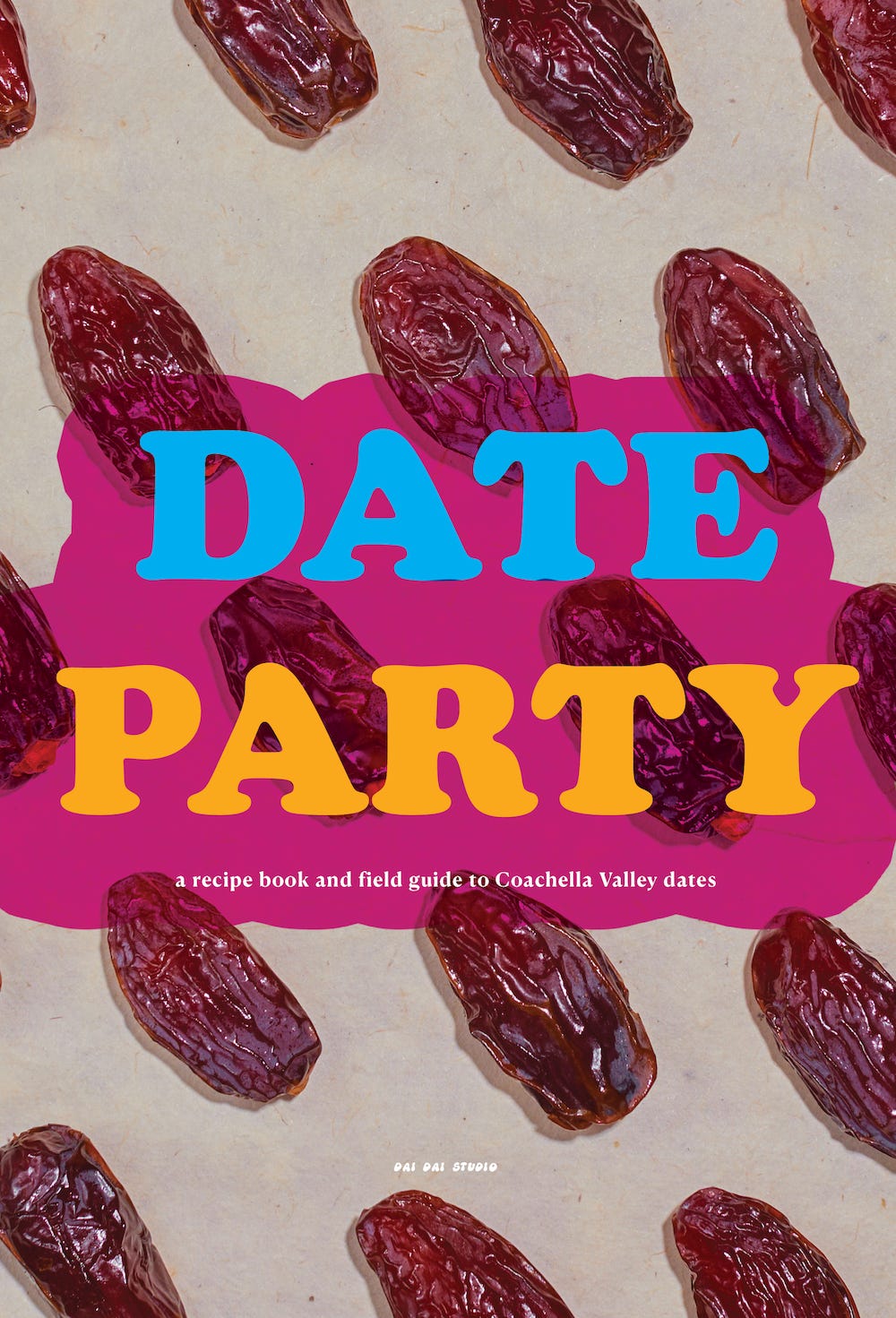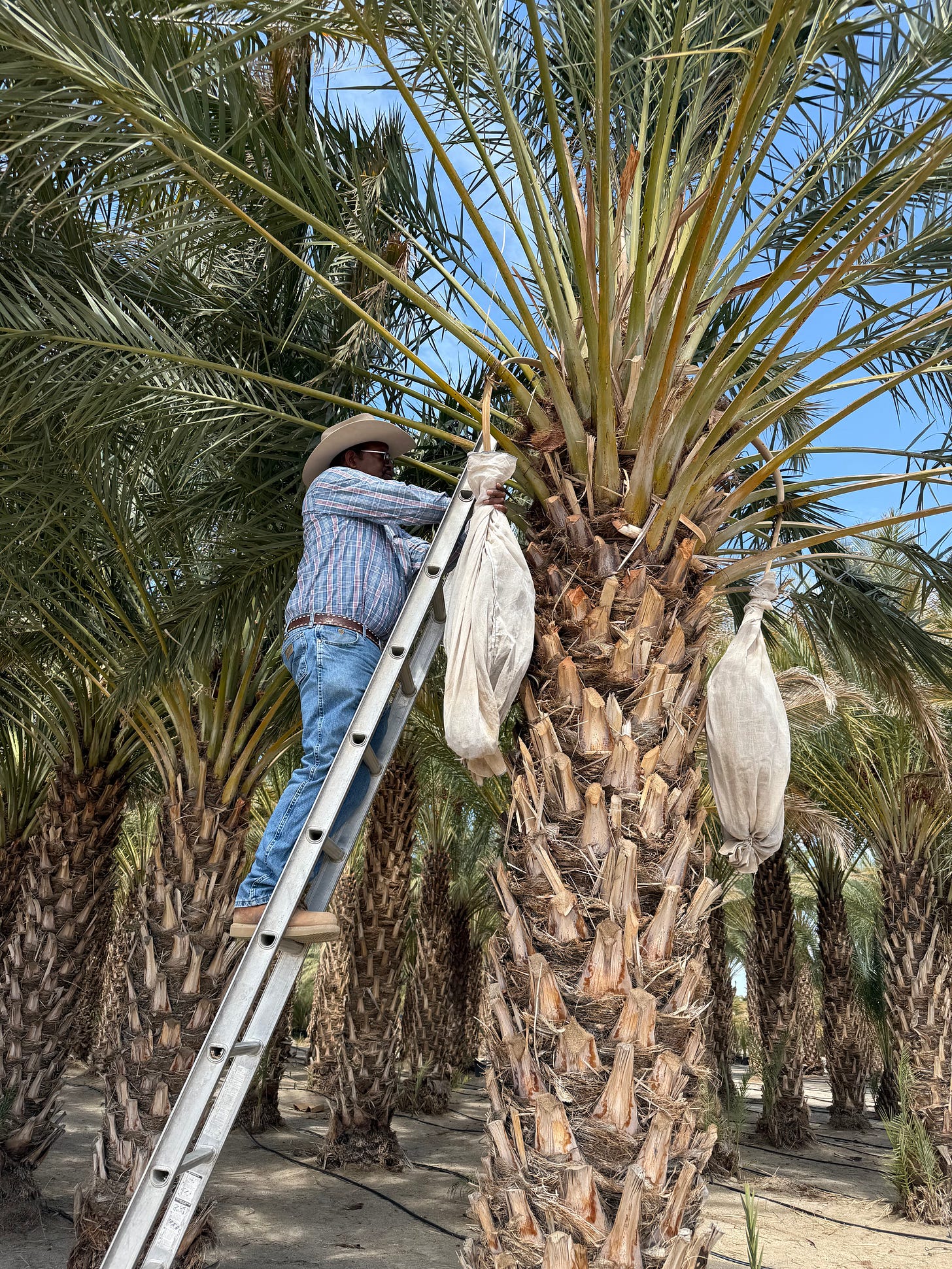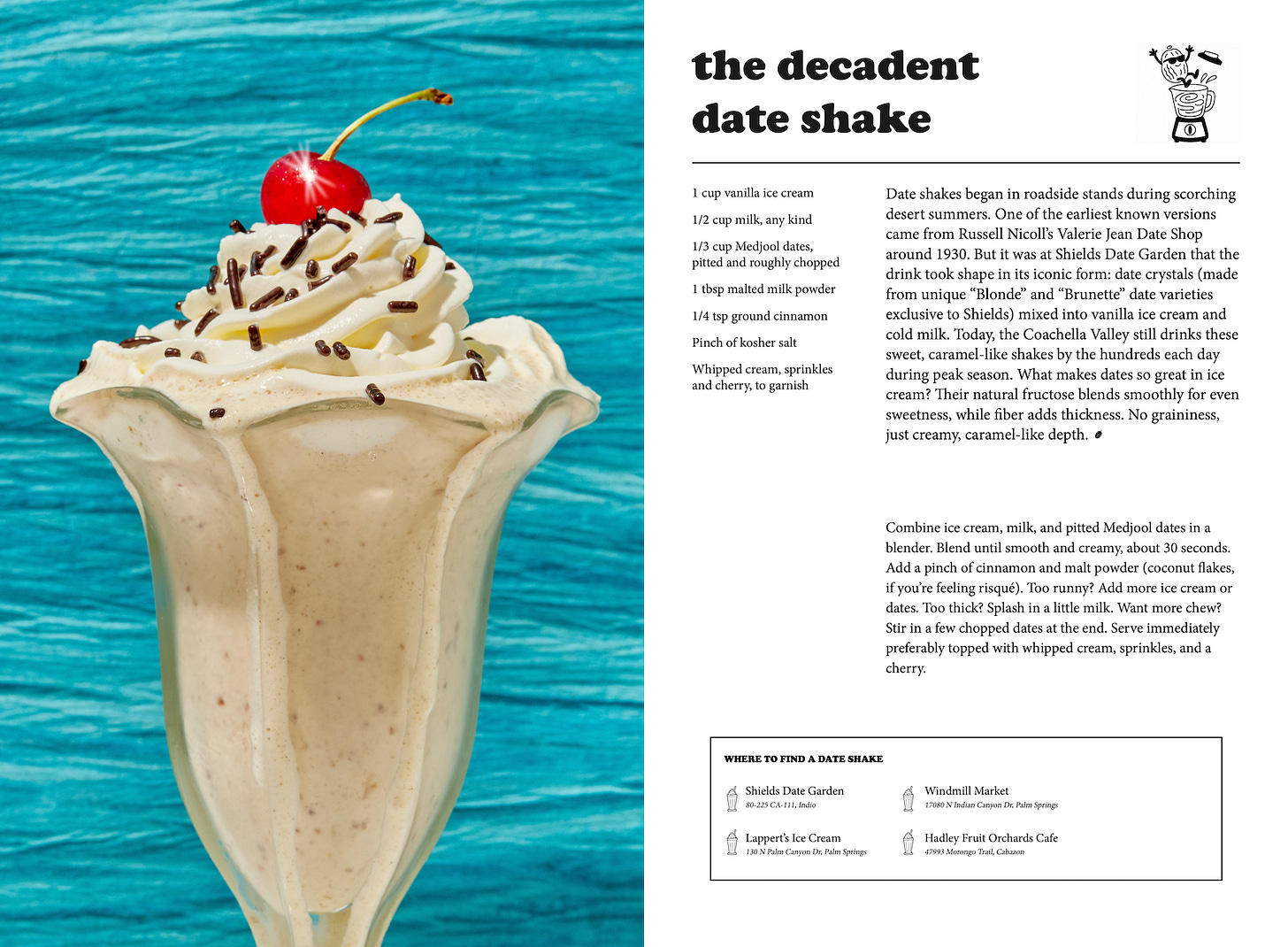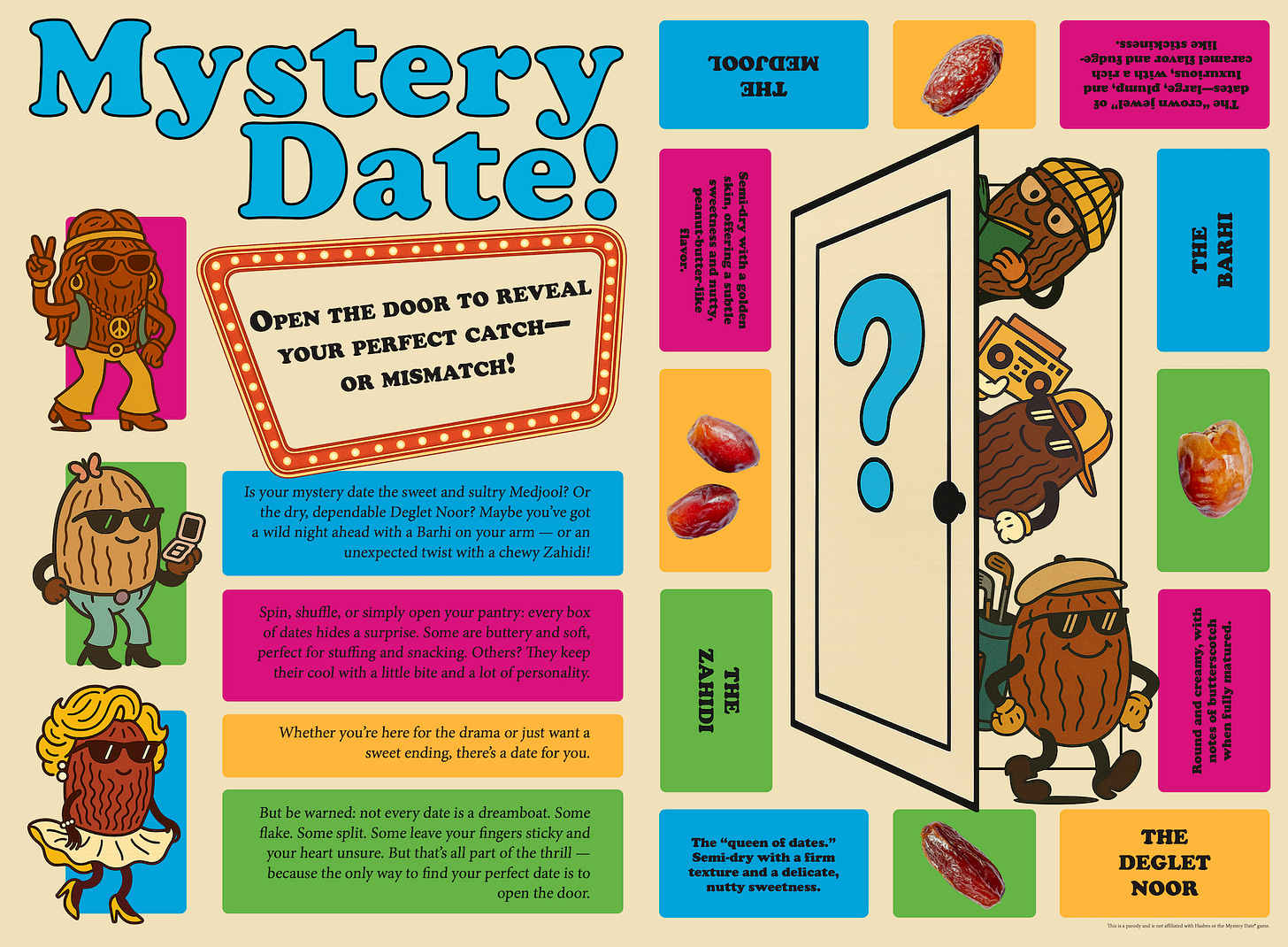Earlier this year, that curiosity evolved into another formal partnership (marriage being the other), this one sealed with the State of Illinois’s LLC paperwork:
. In the past, we’ve written and photographed stories about hosting a cannabis dinner party and eating cicadas during a summer emergence, and last year, we produced a cookbook for an Italian winery. Through Dai Dai, we look forward to continuing to explore how food and drink convey the stories of place.Over the past decade, our quick weekends or longer-stay travels have taken us to groves, markets, fields, wineries, bakeries and cafés, from Gaeta, Italy, to Westfield, New York, and many places in between. We’re never there to be definitive historians — in some cases, tourists, at best — but we do light up at the ways people grow, make and share the things they love. We find great joy in sharing what we learn with the people we know and love.
Last spring, that curiosity carried us to the Coachella Valley, where date palms outnumber music fans for 50 weeks out of the year. Ninety percent of America’s caramel-dark, sticky, chewy dates come from this narrow desert strip, but even still, we learned quickly that the future of farming them is far less sweet.
For
, we wrote about the pressures reshaping the Valley. In the past decade alone, nearly 13,000 acres of farmland have disappeared into subdivisions, golf courses and resorts. Median home prices now top $650,000, giving developers the edge over farmers. Zoning protections exist mostly in name.Meanwhile, consolidation is redrawing the date industry. Last year, Oasis Date acquired 5,000 acres and a half-million-square-foot facility, instantly becoming North America’s largest grower and the leading supplier to Natural Delights (the dates we can find easily in our grocery store in the Midwest). Farmers in California may recognize the playbook well: Oasis’s CEO is an alum of The Wonderful Company, the marketing juggernaut that turned pistachios (Wonderful), pomegranates (POM), and mandarins (Halos) into monopolized household brands.
But, still, there are holdouts. Mark Tadros has reinvented his family’s Aziz Date Farms with agritourism and CSAs. Sam Cobb, likely the only Black date farmer in the U.S., runs a 100+ acre farm almost entirely himself and even discovered a new variety — the “Black Gold” date — by transplanting a wild palm from the roadside.
That’s the story we looked to tell: land, labor, and legacy under pressure, a tide of what is new and what has been.
👉 You can read the full Sourced story here.
And now for something a little bit different. While we were in Coachella Valley, we also set out to create what would eventually become Date Party, our own contribution to the print frenzy. PRINT AIN’T DEAD!
Part recipe book, part field guide, Date Party features farmer interviews, a board game, and even a word decoder at the end, celebrating the food (date shakes, sticky toffee pudding, bacon-wrapped dates) while also sharing more about the groves that produce them. Also inside, a beautiful map created by the very talented illustrator Hallye Webb.
👉 You can grab a copy of Date Party here.
Anthropologist Edward Bruner, who helped define the study of tourism, argued that destinations are layered with competing narratives. A winery can be all of these things at once: a workplace, a heritage site, a photo backdrop and a commercial brand. Cultural anthropologist Noel Salazar adds another layer with his idea of “tourism imaginaries” — the postcard visions we bring before we arrive, like Tuscany as a vineyard idyll or Paris as a café terrace. Because these visions are so emotionally powerful, they don’t just shape what visitors expect; they push locals, governments, and developers to reproduce them.
Seen through these lenses, the Coachella Valley becomes a place where the imagined and the lived collide: the date palm is at once a nostalgic treat, a new-age snack-bar ingredient, a religious tradition, a migrant-labor economy, a global export, and, for some, the perfect backdrop for an imagined desert oasis.
The challenge — and the work we set out to do — is to hold these narratives together and show how they interact. Date Party became our way of doing that: folding recipes, farmer interviews, and even playful elements into a single object. It’s not neutrality we’re after — that’s impossible — but a way of carrying forward these overlapping stories with curiosity and care.
We’d be overjoyed if you picked up a copy of Date Party or shared it with a friend. And if the resurrection of Halloween Spirits isn’t a signal enough, it’s officially October, which means the holidays are just around the corner.
👉 One more time for good measure — you grab a copy of Date Party here.
If you’ve made it this far, you can use code DATEPARTY5 for 5% off Date Party, which essentially covers the cost of shipping. 🤖






Welcome to the Date Party! So proud of this!